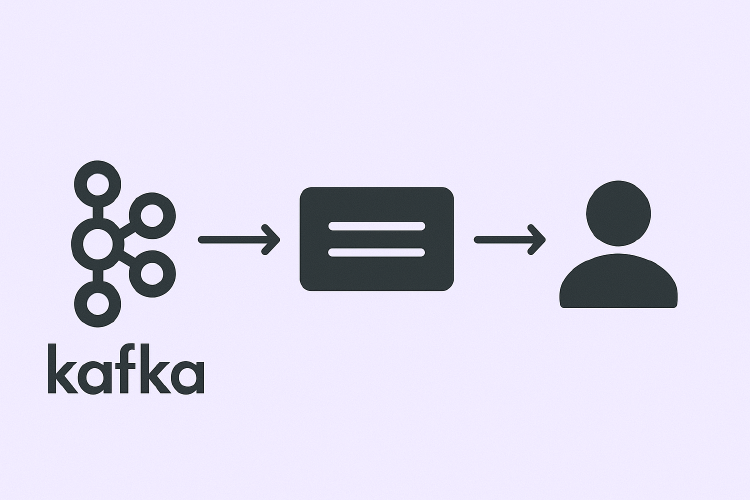How to Set Up Kafka on Kubernetes
A step-by-step guide to deploying Apache Kafka on a Kubernetes cluster using Minikube, kubectl, and Helm.

- Dr. Vivek Shilimkar
- 3 min read

Introduction
Apache Kafka is a powerful distributed event streaming platform. Running Kafka on Kubernetes allows you to leverage container orchestration for scalability and resilience. This article walks you through setting up Kafka on a local Kubernetes cluster using Minikube, with all the necessary tools and configuration manifests.
Prerequisites
Before you begin, make sure you have:
- A running Kubernetes cluster (Minikube is used for demonstration)
kubectl(Kubernetes CLI)helm(Kubernetes package manager)
Choosing a Kubernetes Distribution
Kafka can be deployed on managed Kubernetes services like Azure AKS, Amazon EKS, or Google GKE, or on a local cluster. For simplicity, this guide uses Minikube.
Setting Up a Local Minikube Cluster
Download and install Minikube:
https://storage.googleapis.com/minikube/releases/latest/minikube-linux-amd64
chmod +x minikube
sudo mv minikube /usr/local/bin/
Start your Minikube cluster with sufficient resources:
minikube start --memory=4096 --cpus=2
Check the cluster status:
minikube status
Installing Kubernetes CLI Tools
-
kubectl: Used to interact with your cluster. Install guide
Verify installation:
kubectl version --client -
Helm: Simplifies installation of applications like Kafka. Install guide
Verify installation:
helm version
Kafka Cluster Configuration
Setting up Zookeeper Ensemble
Zookeeper manages broker metadata and coordinates distributed processes for Kafka. Deploy Zookeeper using the following manifest (zookeeper.yml):
apiVersion: apps/v1
kind: Deployment
metadata:
name: zookeeper-deployment
labels:
app: zookeeper
spec:
replicas: 1
selector:
matchLabels:
app: zookeeper
template:
metadata:
labels:
app: zookeeper
spec:
containers:
- name: zookeeper
image: confluentinc/cp-zookeeper:7.0.1
ports:
- containerPort: 2181
env:
- name: ZOOKEEPER_CLIENT_PORT
value: "2181"
- name: ZOOKEEPER_TICK_TIME
value: "2000"
---
apiVersion: v1
kind: Service
metadata:
name: zookeeper-service
spec:
selector:
app: zookeeper
ports:
- protocol: TCP
port: 2181
targetPort: 2181
- Replicas: For high availability, increase to an odd number (e.g., 3 or 5).
- Service: Exposes Zookeeper on port 2181 for Kafka to connect.
Configuring Kafka Brokers
Kafka brokers handle records, assign offsets, and store data. Deploy Kafka using the following manifest (kafka.yml):
apiVersion: apps/v1
kind: Deployment
metadata:
name: kafka-deployment
labels:
app: kafka
spec:
replicas: 1
selector:
matchLabels:
app: kafka
template:
metadata:
labels:
app: kafka
spec:
containers:
- name: broker
image: confluentinc/cp-kafka:7.0.1
ports:
- containerPort: 9092
env:
- name: KAFKA_BROKER_ID
value: "1"
- name: KAFKA_ZOOKEEPER_CONNECT
value: 'zookeeper-service:2181'
- name: KAFKA_LISTENER_SECURITY_PROTOCOL_MAP
value: PLAINTEXT:PLAINTEXT,PLAINTEXT_INTERNAL:PLAINTEXT
- name: KAFKA_ADVERTISED_LISTENERS
value: PLAINTEXT://:29092,PLAINTEXT_INTERNAL://kafka-service:9092
- name: KAFKA_OFFSETS_TOPIC_REPLICATION_FACTOR
value: "1"
- name: KAFKA_TRANSACTION_STATE_LOG_MIN_ISR
value: "1"
- name: KAFKA_TRANSACTION_STATE_LOG_REPLICATION_FACTOR
value: "1"
---
apiVersion: v1
kind: Service
metadata:
name: kafka-service
spec:
selector:
app: kafka
ports:
- protocol: TCP
port: 9092
- Replicas: For high availability, increase to an odd number.
- Service: Exposes Kafka on port 9092 for producers and consumers.
Additional Considerations
- High Availability: Increase replicas for both Zookeeper and Kafka.
- Persistent Storage: Use PersistentVolumeClaims for broker storage.
- Resource Allocation: Allocate appropriate CPU and memory for each pod.
Deploying Zookeeper and Kafka
Apply the manifests:
kubectl create -f ./resources/zookeeper.yml
kubectl create -f ./resources/kafka.yml
Check deployment status:
kubectl get deployments
Example output:
NAME READY STATUS RESTARTS AGE
kafka-deployment-5647b8549-w6skc 1/1 Running 0 2d
zookeeper-deployment-b65b447fd-k4qhx 1/1 Running 0 2d
You can also use the Minikube dashboard:
minikube dashboard
Creating a Kafka Topic
Exec into the Kafka pod and create a topic:
kafka-topics --bootstrap-server localhost:9092 --create --topic topic-one --replication-factor 1 --partitions 3
Expected output:
Created topic test-topic.
Producing and Consuming Messages
Start a producer:
kafka-console-producer --broker-list localhost:9092 --topic topic-one
Type a few messages and exit with Ctrl+C.
Start a consumer (in another terminal):
kafka-console-consumer --bootstrap-server localhost:9092 --topic topic-one --from-beginning
You should see the messages you produced. Note that with multiple partitions, message order is not guaranteed.
Conclusion
With these steps, you have a basic Kafka cluster running on Kubernetes. For production, consider scaling replicas, adding persistent storage, and tuning resource allocations for reliability and performance.
- Tags:
- Kafka
- Kubernetes
- Helm
- Zookeeper